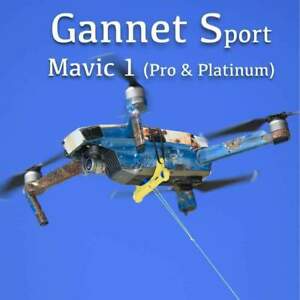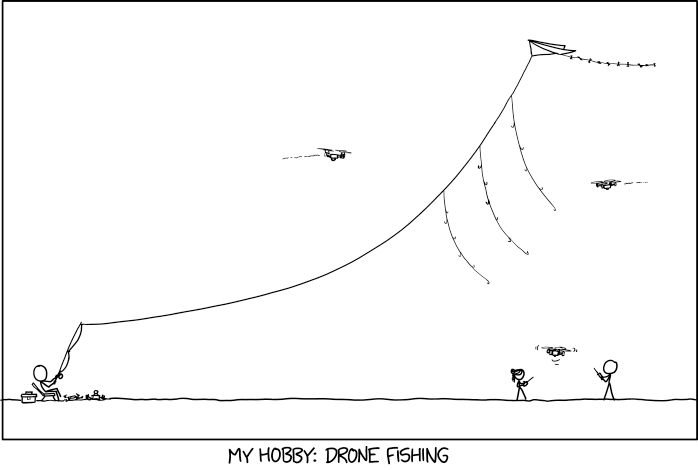
If you're considering using a drone for fishing, you'll likely want to learn more about the regulations. There are instructional videos showing you how to fly your drone to catch fish. Read our article about drone ethics if you have any questions. We will discuss some ethical concerns regarding drone fishing. Check out our guide for drone fishing gear.
Regulations applicable to drone fishing
The regulations for drone fishing for tuna can be confusing when you're watching YouTube videos. There are several reasons to follow local laws, but in the end, the main concern is safety. You need to follow the right laws in order to protect the lives of both you and the fish. In this article we will cover some of the most important rules and make sure you follow them. Follow the International Game Fish Association guidelines.
Drones cannot operate over public places such as sporting events and stadiums. They cannot be within 50 feet of any sporting event or carry weapons. Operators of drones must maintain a clear view of their aerial equipment at all time. Drones cannot fly over public buildings, stadiums, or critical infrastructure. If you are unsure about the rules for fishing with a drone, consult an attorney.

Although many states have already passed laws governing drone use, others are yet to do so. Illinois, for example, recently passed SB 2167. The bill prohibits the operation of drones within state parks without prior permission. It also establishes privacy rights, and specifies the rules for recreational and commercial drone operators. It also prohibits drones interference with hunters and other wildlife. These laws will be in effect for a few more years.
Drone fishing raises ethical concerns
Drone fishing is controversial and not without controversy. Some companies sell underwater drones that are able to fish for fish. The drones' video content often shows the actual fishing process. This is similar to casting your line to catch a fish. The process of taking a fish from water is different. If you are ethically concerned about this fishing method, you might consider looking elsewhere for entertainment.
Drones can be used to fish. But some people feel they are cheating the fishing community. The sport of fishing has not changed significantly over the millennia. However, using drones to catch fish could change that and reduce the thrill of it. Drones can also pose a threat to conservation. Here are some of the ethical concerns that you should consider before you decide to use a drone for fishing.

Drone fishing is not the best choice. It may damage the environment and overfish an endangered species. While some states may allow the use of drones in recreational fishing, many do not. Drone fishing comes with a few limitations. The drones you buy might not be as capable of controlling the range, GPS functionality, lifting power, or control range that you need. Second, drone fishing can lead to loss of fish if line tangles occur. The third issue is piloting.
FAQ
Is it possible to fly a helicopter while driving?
Driving a drone is dangerous, as it could cause an accident or crash into another vehicle. Additionally, you may hit pedestrians or animals. In addition, you could damage your car by hitting power lines, trees, or buildings.
Is it illegal for a drone to be flown?
Yes, it is illegal to fly drones in some countries like Australia, Canada and New Zealand. It is legal in countries such as France, Italy Netherlands, Poland and Russia.
What is the maximum height you can fly a drone with no license?
The FAA does not limit the height of a drone. However, you must register your unmanned aircraft system (UAS), which includes the registration numbers, model name and weight, size, serialnum, manufacturer's name and date manufactured.
Statistics
- According to the multiple listing service (MLS), houses and apartments with drone photographs are up to 68 percent more likely to sell than those without pictures. (thedroneu.com)
- Research and Markets predict a growth rate of 51.1% over the next five years. (thedroneu.com)
- According to Indeed, a drone pilot gets paid $25.73 per hour on average in the US. (dronesgator.com)
External Links
How To
How to Fly Drones with Beginners
A drone can be used to fly remotely controlled aircraft for photography, surveillance, scientific research, hobby and commercial purposes. Drones are a technology that has been around since World War II. DJI introduced their Phantom series of quadcopters in 2010, but commercial use only began in 2010. Many types of drones have been made available since then, from beginner-friendly models such as the Parrot AR Drone 2.0, to high-end multi-rotor craft such as the DJI Mavic Pro.
There are many options for flying a drone.
-
Remote control: This uses a remote control device that attaches to your hand and allows you control the drone along its flight path. There are two main types: Joysticks (like a radio), and On/Off switches (like an alarm clock).
-
Manual Control- This allows you to control your drone remotely via GPS coordinates. The app will provide instructions and help you to locate the drone.
-
Autonomous Flight – This is when the drone handles all the piloting tasks. It allows the drone to fly independently without any human intervention. For the autonomous flight to occur, the drone must have a built-in camera and sensors capable of capturing images and data.
-
Triggered Flying - This method works in the same way as manual control. However, the pilot has to manually set up a route for the drone and it follows that route until reaching the endpoint. Once the programmed route is completed, the drone lands automatically and returns back to the base.
-
Landing Gear: Some drones have landing gear that allows them safely to land in case they lose power or run low on battery.
-
Goggles: Some pilots use goggles in order to protect themselves against debris when operating.
-
Camera - Some drones can be equipped with cameras which enable you to capture photos from the sky.
-
Obstacles - Some drones can be equipped with obstacle avoidance systems that prevent them from crashing into obstacles.
-
Speed - Some drones can travel at speeds over 40 mph.
-
Battery Life - Most drones last between 20 and 3 hours depending on how much power they have.
-
Range - Some drones can travel upto 30 miles depending on their models.
-
Power source – Some drones require external power sources, others require internal batteries.
-
Weight - Some drones are lighter than others, while some models can weigh as much as 4 pounds.
-
Size - From small drones that can be carried in the palm of one's hand to larger drones that weigh over 50 pounds, drones come in a variety of sizes.
-
Price - Drones come in a variety of price categories, including high-end models which can run into the thousands and low-cost options that can start at $100.